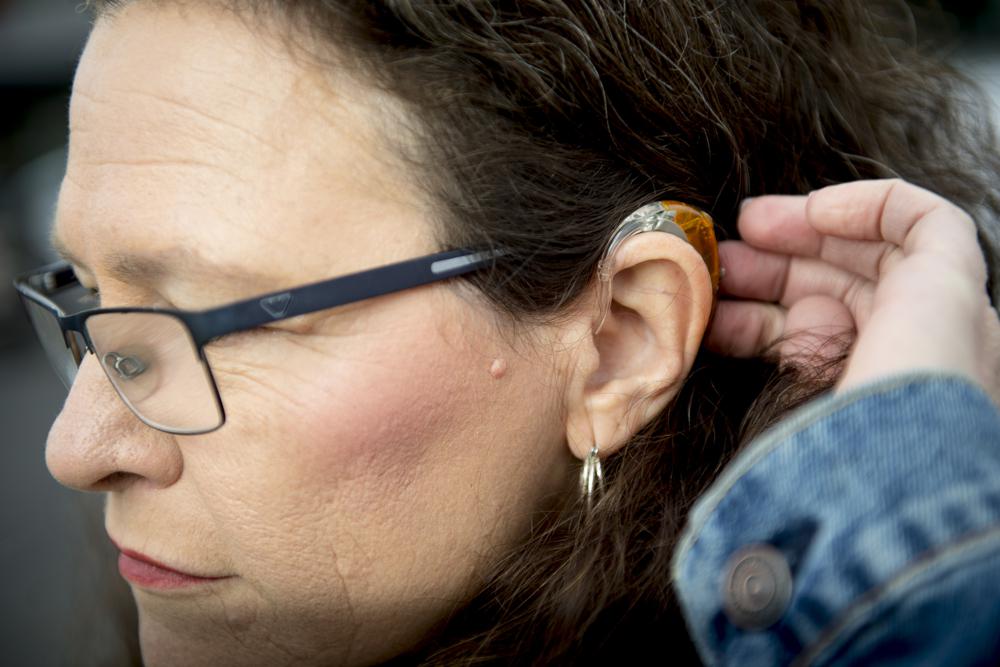FILE – Kim M. Smith, leader of the Utah Deaf Hospital Rights movement and president of the Utah Association of the Deaf, brushes her hair away from her hearing aid as she poses for a portrait Monday, Jan. 20, 2020, at Alta View Hospital in Sandy, Utah. Millions of Americans may be able to buy hearing aids without a prescription by this fall, under a long-awaited rule finalized Tuesday, Aug. 16, 2022, that’s intended to make the devices more accessible to people with hearing problems. The Food and Drug Administration said the new regulation cuts red tape by creating a new class of hearing aids that don’t require a medical exam, a prescription and other specialty services. Instead the devices will be sold online or over-the-counter at pharmacies and other retail stores. (Isaac Hale/The Daily Herald via AP, File)
WASHINGTON (AP) — Millions of Americans will be able to buy hearing aids without a prescription later this fall, under a long-awaited rule finalized Tuesday.
The Food and Drug Administration said the new regulation cuts red tape by creating a new class of hearing aids that don’t require a medical exam, a prescription and other specialty evaluations. The devices will be sold online or over-the-counter at pharmacies and other retail stores.
The devices are intended for adults with mild to moderate hearing problems. The FDA estimates that nearly 30 million adults could potentially benefit from hearing aids, but only about one-fifth of people with hearing problems use the devices currently.
“Today’s action by the FDA represents a significant milestone in making hearing aids more cost-effective and accessible,” Health and Human Services Secretary Xavier Becerra, told reporters Tuesday.
The FDA first proposed the rule last year and it will take effect in mid-October. The move follows years of pressure from medical experts and consumer advocates to make the devices cheaper and easier to get.
Cost is a big obstacle now. Americans can pay more than $5,000 for a hearing aid, between the device itself and fitting services. Insurance coverage is limited and Medicare doesn’t pay for hearing aids, only diagnostic tests.
The FDA first proposed the rule last year and it will take effect in mid-October. The move follows years of pressure from medical experts and consumer advocates to make the devices cheaper and easier to get.
Cost is a big obstacle now. Americans can pay more than $5,000 for a hearing aid, between the device itself and fitting services. Insurance coverage is limited and Medicare doesn’t pay for hearing aids, only diagnostic tests.
The FDA said it changed several parts of its initial proposal in response to public comments, including clarifying how the rule will impact state regulations.
Tuesday’s announcement follows prodding from medical committees and Congress, which in 2017 instructed the agency to lay out a plan for over-the-counter hearing devices.
The Associated Press Health and Science Department receives support from the Howard Hughes Medical Institute’s Department of Science Education.
Copyright 2021 Associated Press. All rights reserved.
Source: https://apnews.com/article/science-health-government-and-politics-9fba21c0cd4c417e14544e6966b5a298
























